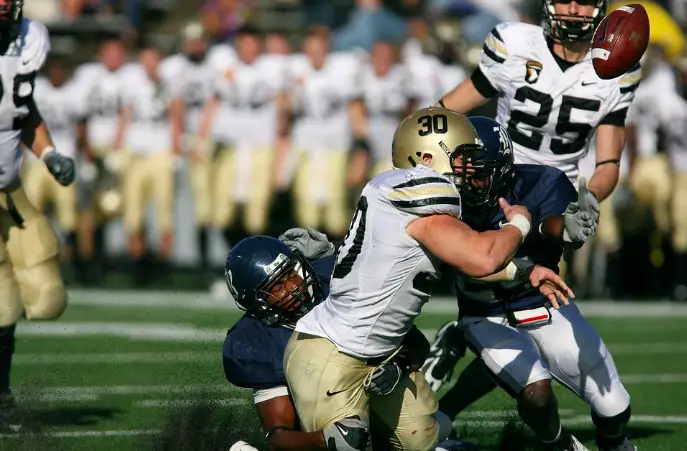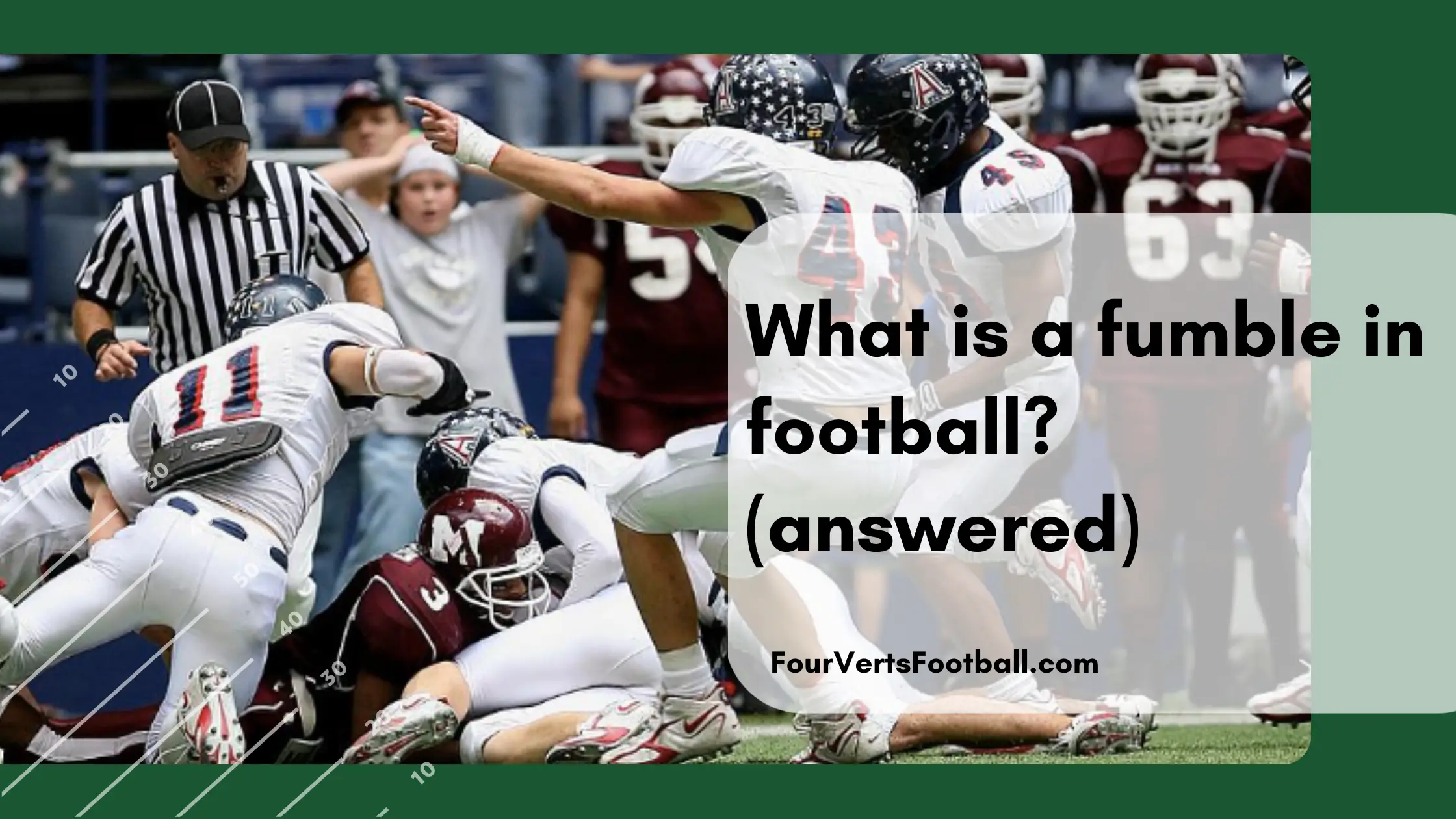A fumble in football occurs when a player loses possession of the ball before being tackled, scoring, or travelling out of bounds. In order for a player to fumble the football, he needs to have clear possession of the ball beforehand.
When a ball is fumbled in football either team will be able to recover it. This makes fumbles important plays in football as they can result in a change of possession from one team to the other.
For this reason, offensive players work hard to make sure they do not lose possession of the ball when they have it. While defensive players try many different tactics to take the ball out of their opponent’s hands.
Recovering the football
As we stated earlier fumbles in football are live balls meaning they can be recovered by either team. Though on some occasions the different rules will apply depending on which team is attempting to recover the ball.
Offense
When you are on the offensive side of the ball recovering a fumble is the main goal if a teammate loses possession.
Wherever the player who recovered the ball is downed on the field is where they will start their next play. If the ball is fumbled twenty yards downfield and recovered by the offense this will result in a first down.
Though if the ball is recovered and the carrier is tackled behind the line of scrimmage the offense will lose yards and the down. For example, let’s say a team fumbles on 2nd down with ten yards to go and recovers it five yards back from where the play started.
This will mean their next play will be 3rd down with fifteen yards to go. This is an example of how a recovered fumble on offense can still be a negative play.
On some occasions, offensive players will recover the ball and be able to advance it downfield. Offensive fumble recoveries allow any player to pick up the ball and advance it though they rarely get very far down the field.
Defense
When the defense causes a fumble in football they create a chance at a turnover but also a chance at scoring a touchdown.
Any defensive player on the field may pick up a loose ball that has been fumbled and return it.
When a ball is fumbled you will often hear players of the defense yelling that there is a loose ball. This signals all defenders in the area to go to the loose ball in hopes of recovering it.
If a defensive player recovers a fumble he will give his team possession of the ball. When a player on the defense recovers this is marked as a fumble recovery and the opposing team is charged with a lost fumble.
Defensive players will return the ball as close as they can to their opponent’s end zone. Wherever the player is downed is where his team’s offense will start with the ball on their next drive.
How are fumbles created in football?
Now that you know what a fumble is in football you may be wondering how these plays come about.
Big hits

One way that fumbles are generated in football is via big hits. Even when a player is protecting the football a big hit from a defender can jar it loose.
This is especially true when hitting quarterbacks. When quarterbacks are hit from their blindside it is fairly common for the ball to come loose.
This is why you will often find pass rushers near the top of the list in forced fumbles each year.
Muffs
Another way that a football player may fumble the ball is on special teams. On both punt returns and kick returns players are responsible for catching long kicks.
If the returner touches the ball but does not catch it, the result is a fumble. The action of failing to properly catch one of these kicks is referred to as a muff.
Peanut Punch
One final way defenders generate fumbles is through a method called the peanut punch. Charles “Peanut” Tillman was a cornerback in the NFL and became renowned for his ability to punch the ball out of his opponents hands.
Nowadays when you watch the NFL you will notice many defenders will take several punches at the ball before bringing the player to the ground.
These punches don’t always have a high success rate but causing just one fumble can be enough to change the game in your team’s favour.

